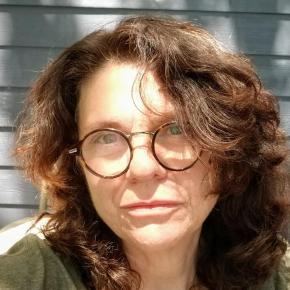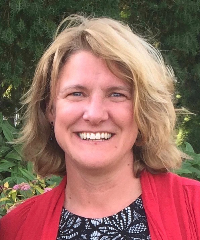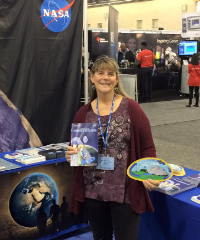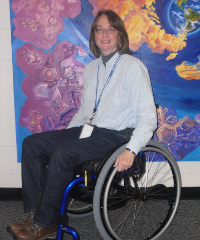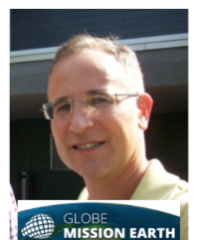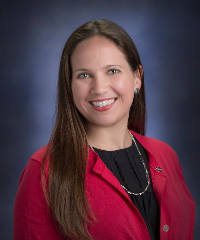Community Blogs
Community Blogs
Discover how the GLOBE community is engaging in all things GLOBE through the community blog posts below.
Learn how to create a GLOBE community blog post.
Filter By:
Blogs List
Every year, I offer a field based professional learning opportunity (PLO) for educators. This year's PLO was Exploring Badlands National Park through Science and Storytelling held June 18-21 in South Dakota. Nine educators spent one day in class and three days and two nights in Badlands National Park doing hydrology field studies using GLOBE protocols (water temperature, water clarity, conductivity and pH) in addition to other opportunities.
As part of my own professional learning, I set myself a challenge of trying to tell the story of the field studies in ways other than ...
Read More »
Posted in:
Event Topics:
WORKSHOPS
GLOBE Science Topics:
GLOBE PROTOCOLS
Teacher's Guide:
PROTOCOL INSTRUCTIONS
Hi, every one, you remember that fall where Tony got rescued long ago in his youth? Well we were there and the place is so beautiful and inviting. No wonder the lad had to take a risk and climb it without ropes. It was nice place and the student field task there was exciting. But please take note if you are going to be at the Lower Toc, getting wet is very normal, and not shorts for your sake.
Francis
Posted in:
I am hearing more and more conversations center around "bundling," particularly when it comes to NGSS ( Next Generation Science Standards ). Sometimes, in my GLOBE world, it is a conversation around bundling the protocols together. I know that some teachers already do this when they take students outside for field investigations. In my email clean-out, I found this little gem that I thought I'd share.
In 2012, the GLOBE Annual Meeting in St. Paul, Minnesota included two investigation questions for fieldwork. To answer the questions, the participants used several protocols to collect ...
Posted in:
Curriculum:
SCIENCE AND MATH
TECHNOLOGY
STEM
GLOBE Science Topics:
GLOBE PROTOCOLS
Primary Audience:
TEACHERS
I've been digging through my Inbox, trying to clear out some of the large files from the past. I'm at a critical point as these files are triggering invitations to buy more space for storage. Rather than doing that, I'm deleting instead!
But during this process, I've come across some resources and discussions that I always seem to forget exist already on the GLOBE website. I thought that perhaps I'd write a couple blog posts and point out some of these for anyone following my blog.
This first one is a training agenda from 2003! A group of us were invited to Washington, D.C. to work ...
Posted in:
Curriculum:
SCIENCE AND MATH
GLOBE Science Topics:
GENERAL SCIENCE
GLOBE PROTOCOLS
SCIENTIST SKILLS
Investigation Areas:
BIOMETRY (INCLUDING TREE HEIGHT)
BIOSPHERE
LAND COVER CLASSIFICATION
We had a fabulous webinar this afternoon in which students in both North America and South America shared their work on using GLOBE protocols to learn more about water in their environment. Meriam Kalloe, the GLOBE Assistant Country Coordinator for Suriname, brought together many students from Anton Resida Middle School who shared information on their use of several GLOBE hydrology protocols to study the quality of water in three locations near their school. They plan to continue to monitor the quality of the water in those three sites. Then Jeff Bouwman's middle school students ...
Posted in:
Curriculum:
STEM
SCIENCE AND MATH
Event Topics:
CAMPAIGNS AND PROJECTS (IOPS, ETC)
SCIENCE SYMPOSIA AND FAIRS
Field Campaigns:
EL NIÑO
SMAP
GPM
GLOBE Science Topics:
EARTH SYSTEM SCIENCE
GENERAL SCIENCE
GENERAL SCIENCE @ES
CLIMATE CHANGE
DATA INCLUDED
BACKYARD SCIENCE
MEETINGS/CONFERENCES
CLIMATE
EARTH AS A SYSTEM
SCIENTIST SKILLS
GLOBE PROTOCOLS
GLOBE Working Groups:
EDUCATION WORKING GROUP
Investigation Areas:
ATMOSPHERE
EARTH AS A SYSTEM
HYDROSPHERE
PEDOSPHERE (SOIL)
BIOSPHERE
Learning Activities:
EARTH AS A SYSTEM
ATMOSPHERE AND CLIMATE
LAND COVER/BIOLOGY
HYDROLOGY
SOIL
News Topics:
VIRTUAL SCIENCE FAIR
SCRC RESEARCH
Primary Audience:
PARTNERS
SCIENTISTS
ALUMNI
COUNTRY COORDINATORS
TRAINERS
TEACHERS
STUDENTS
Teacher's Guide:
INVESTIGATION AREA DOCUMENTS
This week we are very excited to highlight the work of Ms. Jillian Anderson and her high school students at the Lexington School for the Deaf, in Queens, NY.
Ever since they joined the U.S. GLOBE Air Quality Student Research Campaign, they have been going outside to make observations of the atmosphere every day! The students have been submitting both Clouds and Aerosol Optical Thickness observations and we want to thank them for their valuable contribution to science.
We encourage them to keep up their great work and we invite other schools to continue ...
Posted in:
Curriculum:
STEM
GLOBE Science Topics:
SCIENTIST SKILLS
GLOBE PROTOCOLS
GLOBE Working Groups:
SCIENCE WORKING GROUP
Investigation Areas:
AEROSOLS
Primary Audience:
TEACHERS
STUDENTS
PARTNERS
SCIENTISTS
We would like to share with you some tips on how to keep your Calitoo instrument up and running:
Keep your instrument indoors until the time of measurement. The instrument detector is sensitive to temperature and performs best near room temperature (~70F or ~21C).
Don’t let your instrument overheat. Also don’t make measurements in extreme cold unless instrument is insulated from cold.
Don’t forget to TURN OFF your instrument after you’re done measuring! To turn off, press the button for a few seconds until the screen reads: “ Stop in progress ”.
When batteries start going ...
Posted in:
This has been a great year for the Urban Heat Island/Surface Temperature Student Research Campaign. More schools and more students have participated than ever before. I posted a 7 minute "Thank You" video here on https://youtu.be/QPfmAbMrwE4 Youtube. Urban Heat Island is a growing issue worldwide. More than 50% of the population of the world lives in urban areas. Much of this growth has been in developing. I went to research presentations about UHI at the American Association of Geography (AAG) meeting in New Orleans this week. There were many talks about UHI and using satellite imagery ...
Posted in:
Field Campaigns:
SURFACE TEMPERATURE
Eight-grade students from Our Lady of Mount Carmel School have been very active during our GLOBE 2017-18 U.S. Air Quality Student Research Campaign. In fact, they recently submitted their team projects to the GLOBE 2018 International Virtual Science Symposium. All students have done remarkable work and one of the most important skills they have developed is collaboration. Among these students, one of them stood out for becoming a Calitoo expert user and for helping not only the members of her own team, but also the members of all other teams, with her accurate AOT measurements.
This ...
Posted in:
Curriculum:
STEM
SCIENCE AND MATH
Event Topics:
CAMPAIGNS AND PROJECTS (IOPS, ETC)
GLOBE Science Topics:
GENERAL SCIENCE
EARTH SYSTEM SCIENCE
GLOBE PROTOCOLS
GLOBE Working Groups:
SCIENCE WORKING GROUP
Investigation Areas:
AEROSOLS
Primary Audience:
TEACHERS
STUDENTS
PARTNERS
The GLOBE Clouds team got to celebrate World Meteorological Day with the Secretary-General of the World Meteorological Organization, Dr. Petteri Taalas through a Facebook live filmed live from NASA Langley Research Center in Hampton, VA.
Join the celebration by watching the recorded Facebook live below.
View event on Facebook at - https://www.facebook.com/nasaearth/videos/10156418942207139/
Posted in:
Curriculum:
STEM
EDUCATION RESEARCH
SCIENCE AND MATH
Event Topics:
OTHER
GLOBE Science Topics:
GENERAL SCIENCE
BACKYARD SCIENCE
Primary Audience:
TRAINERS
TEACHERS
STUDENTS
PARTNERS
SCIENTISTS
ALUMNI
COUNTRY COORDINATORS
Today we will get a closer at look at the values displayed on our Calitoo screen.
When you first turn on your Calitoo, you will get a screen like the following: note the serial number of your instrument will be displayed.
After the initial screen, your instrument will display basic information as shown on the following picture (Source: http://www.calitoo.fr/uploads/documents/en/usermanual_2016_en.pdf )
TIP: The temperature displayed by your Calitoo is actually the temperature ...
Posted in:
Event Topics:
CAMPAIGNS AND PROJECTS (IOPS, ETC)
SCIENCE SYMPOSIA AND FAIRS
GLOBE Science Topics:
EARTH SYSTEM SCIENCE
GLOBE PROTOCOLS
GLOBE Working Groups:
SCIENCE WORKING GROUP
Investigation Areas:
AEROSOLS
News Topics:
VIRTUAL SCIENCE FAIR
Primary Audience:
TRAINERS
TEACHERS
STUDENTS
PARTNERS
Bill Smith, left, along with Kris Bedka.
The NASA GLOBE Clouds team is excited to share with you this recent news article about two NASA scientists that help match your observations with satellite data - Bill Smith and Kris Bedka. They, along with Louis Nguyen lead SatCORPS, at team at NASA Langley Research Center that use expertise in clouds to make better weather predictions.
Read more about their work at https://www.nasa.gov/feature/langley/how-cloud-data-is-improving-weather-forecasts
Posted in:
Curriculum:
STEM
SCIENCE AND MATH
TECHNOLOGY
Event Topics:
OTHER
GLOBE Science Topics:
EARTH AS A SYSTEM
SCIENTIST SKILLS
GENERAL SCIENCE
GLOBE PROTOCOLS
CLIMATE
Investigation Areas:
ATMOSPHERE
Primary Audience:
TRAINERS
TEACHERS
STUDENTS
PARTNERS
SCIENTISTS
ALUMNI
COUNTRY COORDINATORS
As spring begins here in the northern hemisphere, we often see seasonal changes in our precipitation patterns. As most of you know, heavy rains can result in the mass movement of land- known as "landslides". These natural hazards occur all over the world, and often result in destruction of property and even death. Scientists at NASA's Goddard Space Flight Center are in the process of building an open worldwide database for landslide research- and we need you to help us out!
Learn about the " Landslide Reporter " citizen science program in this blog . Learn more about ...
Posted in:
Curriculum:
STEM
SCIENCE AND MATH
Event Topics:
CAMPAIGNS AND PROJECTS (IOPS, ETC)
OTHER
SCIENCE SYMPOSIA AND FAIRS
Field Campaigns:
WATERSHEDS
SEASONS AND BIOMES
EL NIÑO
GPM
GLOBE Science Topics:
EARTH SYSTEM SCIENCE
GENERAL SCIENCE
GENERAL SCIENCE @ES
CLIMATE CHANGE
BACKYARD SCIENCE
CLIMATE
EARTH AS A SYSTEM
SCIENTIST SKILLS
GLOBE PROTOCOLS
Investigation Areas:
ATMOSPHERE
EARTH AS A SYSTEM
HYDROSPHERE
PEDOSPHERE (SOIL)
BIOSPHERE
Learning Activities:
EARTH AS A SYSTEM
ATMOSPHERE AND CLIMATE
LAND COVER/BIOLOGY
HYDROLOGY
SOIL
News Topics:
VIRTUAL SCIENCE FAIR
TRAINING
Primary Audience:
PARTNERS
SCIENTISTS
ALUMNI
COUNTRY COORDINATORS
TEACHERS
TRAINERS
STUDENTS
Teacher's Guide:
INVESTIGATION AREA DOCUMENTS
We are excited to have such a response to the NASA GLOBE Clouds: Spring Cloud Observations Data Challenge . Remember, top observers will be congratulated by a NASA scientist! Click here to learn more about the challenge.
Are you wondering about the clouds you are reporting and the type of weather you might experience in your area? Here is a guide to how cloud types are related to weather!
The information below was taken from the NOAA's SciJinks webpage - https://scijinks.gov/clouds/
Posted in:
Curriculum:
STEM
EDUCATION RESEARCH
SCIENCE AND MATH
Event Topics:
COMPETITIONS
GLOBE Science Topics:
SCIENTIST SKILLS
GLOBE PROTOCOLS
GENERAL SCIENCE
BACKYARD SCIENCE
Learning Activities:
ATMOSPHERE AND CLIMATE
News Topics:
COMPETITIONS
Primary Audience:
TRAINERS
TEACHERS
STUDENTS
PARTNERS
SCIENTISTS
ALUMNI
COUNTRY COORDINATORS
It’s almost spring, the time of year when the looming change in seasons could lead to some pretty fascinating cloud activity in the sky. NASA and the GLOBE Program are asking for your help by taking part in a citizen science cloud observation challenge.
From March 15 through April 15, citizen scientists of all ages can make up to 10 cloud observations per day using the GLOBE Observer app or one of the other data entry options (for trained GLOBE members). Challenge participants with the most observations will be congratulated by a NASA scientist in a ...
Posted in:
Today we start a series of posts devoted to providing information, tips, tricks and answers to frequently asked questions by Calitoo users!
So, how do you measure Aerosol Optical Thickness (AOT) with a Calitoo?
First and foremost: NEVER look directly at the sun!
And… ONLY take measurements when the sun is not obstructed by clouds.
TIP: Use your hand(s) to cover the sun; if you see any clouds on either side of your hand(s), do NOT take any measurements. Wait until the sun is not obstructed by clouds.
Now, the Calitoo sun photometer measures AOT values at 465 nm, 540 ...
Posted in:
Curriculum:
STEM
EDUCATION RESEARCH
SCIENCE AND MATH
Event Topics:
CAMPAIGNS AND PROJECTS (IOPS, ETC)
SCIENCE SYMPOSIA AND FAIRS
GLOBE Science Topics:
GENERAL SCIENCE
GLOBE PROTOCOLS
GLOBE Working Groups:
SCIENCE WORKING GROUP
Investigation Areas:
AEROSOLS
News Topics:
VIRTUAL SCIENCE FAIR
Primary Audience:
STUDENTS
TEACHERS
PARTNERS
The NASA GLOBE Clouds team is excited to highlight Mr. Gary Popiolkowski, a middle school science teacher at Chartiers-Houston Jr./Sr. High School in Houston, PA, USA. Mr. Popiolkowski has been teaching for 44 years and has been a GLOBE teacher since 1995. He has had his students doing cloud observations for the past 18 years, submitting over 15,000 observations! He has also been doing virtual connections with Patumwan Demonstration School in Thailand each year for the past four years.
We ask Mr. Popiolkowski how he does it! Here is what he shared:
Each period of the day the ...
Posted in:
Curriculum:
STEM
SCIENCE AND MATH
Event Topics:
OTHER
GLOBE Science Topics:
SCIENTIST SKILLS
GLOBE PROTOCOLS
GENERAL SCIENCE
Investigation Areas:
SURFACE TEMPERATURE
CLOUDS
Primary Audience:
TRAINERS
TEACHERS
STUDENTS
PARTNERS
ALUMNI
SCIENTISTS
COUNTRY COORDINATORS
The GLOBE Program is in a unique position to provide citizens worldwide with amazing benefits. One of the biggest benefits, I feel, it that of gaining a larger perspective.
I work at Goddard Space Flight Center with the GPM (Global Precipitation Measurement) mission . This Earth-observing satellite is able to measure global precipitation and update these measurements every 30 minutes. You can see the latest data animation for the past week here . As NASA is a key sponsor of The GLOBE Program, many of us who work for NASA are able to share the unique perspectives that ...
Posted in:
Curriculum:
EDUCATION RESEARCH
LANGUAGE CULTURE AND ARTS
SCIENCE AND MATH
TECHNOLOGY
Event Topics:
CAMPAIGNS AND PROJECTS (IOPS, ETC)
SCIENCE SYMPOSIA AND FAIRS
Field Campaigns:
WATERSHEDS
EL NIÑO
SURFACE TEMPERATURE
GPM
GLOBE Science Topics:
EARTH SYSTEM SCIENCE
CLIMATE CHANGE
CLIMATE
EARTH AS A SYSTEM
SCIENTIST SKILLS
Investigation Areas:
ATMOSPHERE
EARTH AS A SYSTEM
HYDROSPHERE
PEDOSPHERE (SOIL)
BIOSPHERE
Learning Activities:
EARTH AS A SYSTEM
ATMOSPHERE AND CLIMATE
HYDROLOGY
LAND COVER/BIOLOGY
SOIL
News Topics:
VIRTUAL SCIENCE FAIR
REGIONS
Primary Audience:
PARTNERS
SCIENTISTS
ALUMNI
COUNTRY COORDINATORS
TRAINERS
TEACHERS
STUDENTS
Teacher's Guide:
INVESTIGATION AREA DOCUMENTS
The GLOBE Clouds team at NASA Langley Research Center in Hampton, VA would like to highlight the top observers for the month of February! Thank you to all observers for submitting your observations and using the satellite matching of data.
Also, remember that on March 15, 2018 we will start our NASA GLOBE Clouds: Spring Cloud Observations Data Challenge ! The top observers will be congratulated by a NASA scientist with a video posted on the NASA GLOBE Clouds website. Click here for more information.
Top 10 cloud observers for February 2018
...
Posted in:
Event Topics:
COMPETITIONS
GLOBE Science Topics:
SCIENTIST SKILLS
GLOBE PROTOCOLS
GENERAL SCIENCE
BACKYARD SCIENCE
Investigation Areas:
CLOUDS
News Topics:
COMPETITIONS
Primary Audience:
TRAINERS
TEACHERS
STUDENTS
PARTNERS
ALUMNI
SCIENTISTS
COUNTRY COORDINATORS
A fourth grade student from Public School 122 (Queens, NY), recently visited NASA Langley for a week. During his visit, he studied the GLOBE Aerosol Protocol. He went outside the Atmospheric Sciences building and collected aerosol data using a Calitoo sun photometer, which measures Aerosol Optical Thickness (AOT) at three wavelengths: 465nm (blue), 540nm (green) and 619nm (red).
After downloading the data measured with the Calitoo to his laptop, the student learned how to access AERONET data. The AERONET ( AE rosol RO botic NET work) project is a federation of ground-based remote ...
Posted in:
Curriculum:
STEM
EDUCATION RESEARCH
SCIENCE AND MATH
Event Topics:
CAMPAIGNS AND PROJECTS (IOPS, ETC)
SCIENCE SYMPOSIA AND FAIRS
GLOBE Science Topics:
GLOBE PROTOCOLS
GENERAL SCIENCE
GLOBE Working Groups:
SCIENCE WORKING GROUP
Investigation Areas:
ATMOSPHERE
AEROSOLS
News Topics:
VIRTUAL SCIENCE FAIR
Primary Audience:
TEACHERS
STUDENTS
PARTNERS
—
20 Items per Page






